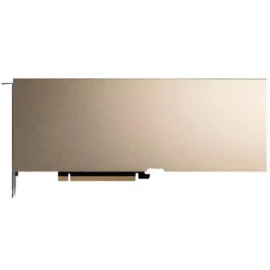Artificial Intelligence (AI) has become a driving force in technology, powering everything from advanced machine learning algorithms to sophisticated data analytics. For professionals and organizations looking to leverage AI, choosing the right GPU is critical. NVIDIA and AMD are the two leading names in the GPU market, each offering powerful options for AI workloads. Here’s a detailed look at the best GPUs from both NVIDIA and AMD for AI in 2024.

Table of Contents
ToggleNVIDIA GPUs for AI
- NVIDIA H100 Tensor Core GPU
- Architecture: Hopper
- Memory: 80 GB HBM3
- Performance: 1,979 TFLOPS FP16
- Best For: Deep learning, large-scale AI models, high-performance computing.
- Overview: The NVIDIA H100 is the latest and most advanced GPU in NVIDIA’s lineup, designed specifically for AI workloads. With its Hopper architecture, it offers groundbreaking performance, making it ideal for training and deploying large AI models. The H100 features the Transformer Engine, which accelerates deep learning tasks by optimizing Transformer model performance. Its massive memory and high-speed connectivity make it suitable for handling the most demanding AI tasks.
- NVIDIA A100 Tensor Core GPU
- Architecture: Ampere
- Memory: 40/80 GB HBM2e
- Performance: 312 TFLOPS FP16
- Best For: Enterprise AI, data centers, research institutions.
- Overview: The Nvidia A100 remains a powerful choice for AI workloads, particularly in data centers and large enterprises. With the Ampere architecture, the A100 delivers exceptional performance across a wide range of AI and high-performance computing (HPC) tasks. It supports multi-instance GPU (MIG) technology, allowing it to partition into multiple smaller GPUs for various tasks, increasing efficiency and utilization.
- NVIDIA RTX 6000 Ada Generation
- Architecture: Ada Lovelace
- Memory: 48 GB GDDR6 ECC
- Performance: 91.06 TFLOPS FP16
- Best For: AI research, development, and small to medium-sized enterprises.
- Overview: The NVIDIA RTX 6000 Ada Generation is designed for AI professionals who need powerful GPUs but don’t require the highest-end solutions like the H100 or A100. It’s suitable for AI model development, simulations, and rendering, offering a balance of performance, memory, and cost.
AMD GPUs for AI
- AMD Instinct MI250X
- Architecture: CDNA 2
- Memory: 128 GB HBM2e
- Performance: 383 TFLOPS FP16
- Best For: High-performance computing, large-scale AI training.
- Overview: The AMD Instinct MI250X is AMD’s flagship GPU for AI and HPC. With its massive memory and CDNA 2 architecture, the MI250X excels in large-scale AI model training and simulations. It’s designed for data centers and institutions requiring extreme computational power and efficiency.
- AMD Instinct MI210
- Architecture: CDNA 2
- Memory: 64 GB HBM2e
- Performance: 181 TFLOPS FP16
- Best For: AI inference, research, and medium-scale AI workloads.
- Overview: The MI210 is a more accessible version of AMD’s high-performance GPUs, offering robust AI capabilities at a lower price point. It’s ideal for AI inference and smaller training tasks, making it suitable for organizations that need powerful yet cost-effective GPU solutions.
- AMD Radeon Pro W6800
- Architecture: RDNA 2
- Memory: 32 GB GDDR6
- Performance: 35.66 TFLOPS FP16
- Best For: AI development, 3D rendering, and small-scale AI projects.
- Overview: While the Radeon Pro W6800 is not primarily designed for AI, its performance makes it a viable option for AI development and small-scale projects. With RDNA 2 architecture and ample memory, it can handle a variety of AI and rendering tasks efficiently.
Conclusion
Choosing the right GPU for AI depends on the specific needs of your projects. NVIDIA’s H100 and A100 GPUs are the leading choices for large-scale AI and high-performance computing, offering unmatched performance and versatility. On the other hand, AMD’s Instinct series, particularly the MI250X, provides a powerful alternative with excellent memory capacity and computational power for AI workloads.
For smaller projects or those with budget constraints, NVIDIA’s RTX 6000 Ada Generation and AMD’s Radeon Pro W6800 offer excellent performance at a more accessible price point. As AI continues to evolve, both NVIDIA and AMD will likely keep pushing the boundaries, providing even more powerful tools for AI professionals and organizations.











